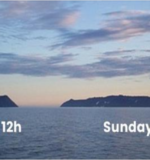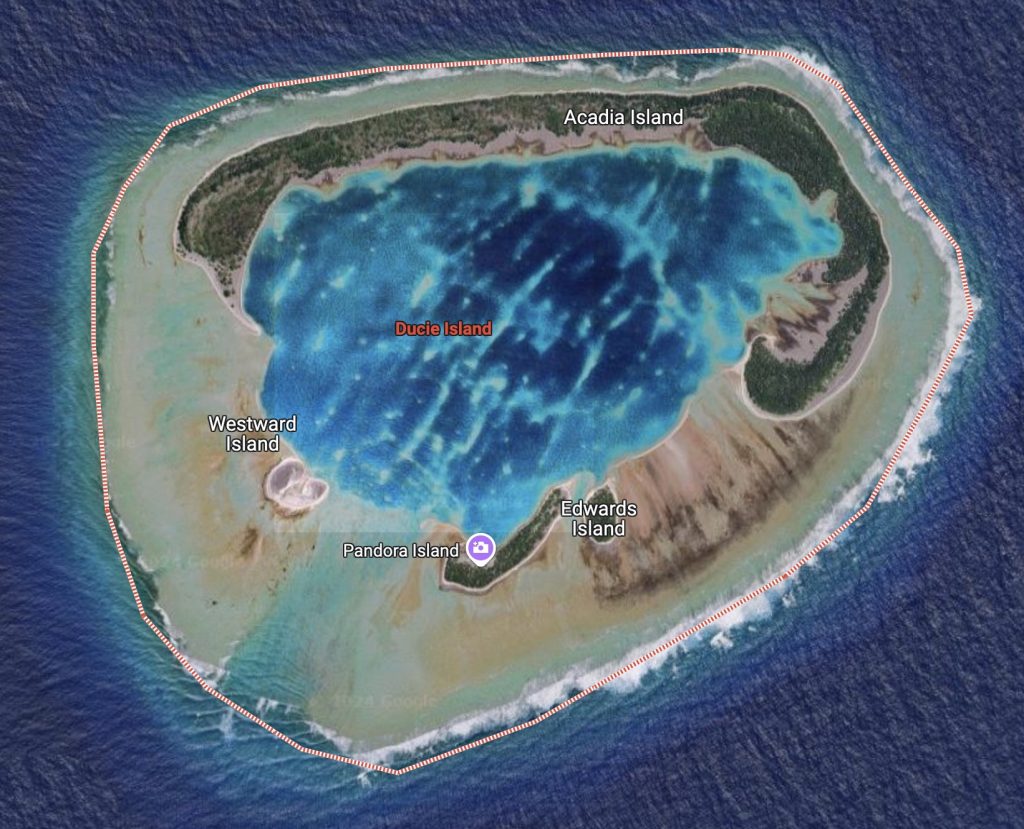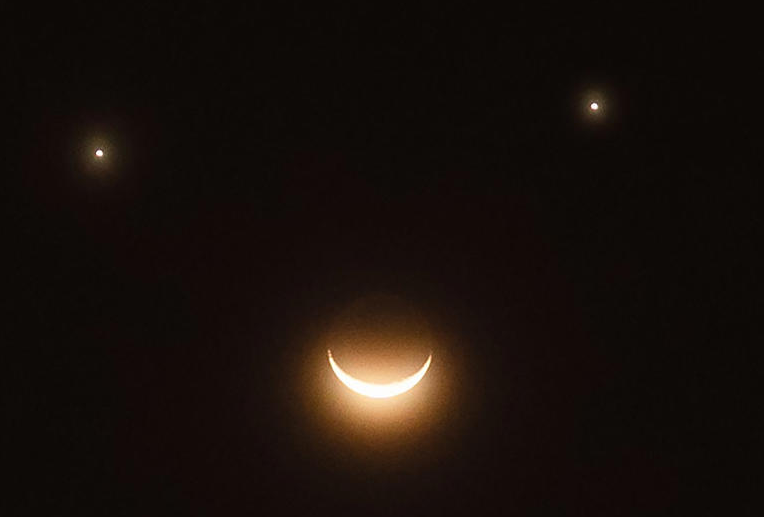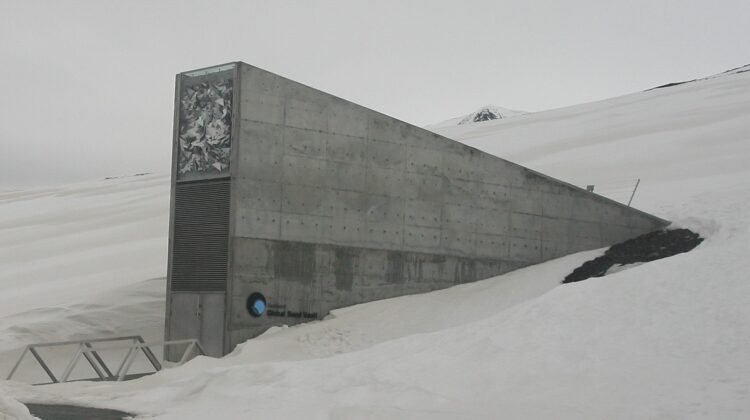The Diomede islands are just three miles apart but the bigger island is almost one day ahead of its smaller neighbor as they sit on two sides of the International Date Line.

Sitting in the middle of the Bering Strait between mainland Alaska and Siberia, Big Diomede is located on the Russian side while Little Diomede is on the US side. Because they are separated by the International Date Line – which passes through the Pacific Ocean and marks the boundary between one calendar day and the next – Big Diomede is almost a day ahead of Little Diomede, but not completely; due to locally defined time zones, Big Diomede is only 21 hours ahead of Little Diomede (20 in summer).
Because of this, the islands are sometimes called Tomorrow Island (Big Diomede) and Yesterday Island (Little Diomede).

“It’s a real time machine. We could see what was happening yesterday in real time,” 40-year-old ex-soldier Ramil Gumerov told Russia Beyond. Gumerov served in the Russian army for two years, from 1995, and spent over a year of that time on the part of the bigger island where today, aside from a military base, there’s only a polar station and a border guard post.
“In reality, to travel to the other island in the other country, or to yesterday, when one was on leave, was pure fantasy. To us, going on leave remained just a dream,” Gumerov said. The ice bridge that forms between the two islands in winter would even make possible, although illegal, to walk the short distance between them and ‘travel through time.’
However, only the indigenous inhabitants, the Eskimos, can travel freely between the islands. After all, they already long inhabited these lands when the first European, the Russian naval explorer Semyon Dezhnev, arrived on the islands. That happened in the 17th century and for the following almost a century and a half, the two islands – 35 km from Chukotka and Alaska – were part of Russia.

The Diomede islands got divided by the state border in 1867, when Russia sold Alaska to the U.S. All of a sudden, the indigenous population found themselves in an unusual situation – the time was the same but the dates were different on the two islands. Compared with Big Diomede Island (Tomorrow Island), Small Diomede Island (Yesterday Island) is always in the past. To allow them to visit relatives, the Eskimos were granted visa-free travel, although for a long time now there have been no civilians living on the Russian island.
In the early 20th century the Eskimos migrated to Little Diomede (about 135 still live in a small settlement on the island) and after World War II, the remaining native population was forced off Big Diomede Island to the Russian mainland in order to avoid contacts across the border.

According to legend, after the Eskimos left, a local shaman came to Big Diomede and cursed it. And, allegedly, since then, for various reasons, people on the island have been dying. Gumerov, however, rightly observes: “People die everywhere and the island is no exception. What’s to blame – an accident, the forces of nature, or a shaman’s curse? I don’t know.”
Gumerov was sent to the islands on army duty from the south of the Republic of Bashkortostan, long after the first border guard detachment arrived here in 1941. According to him, life on the island is harsh – nine months of winter, with freezing temperatures and strong winds. For 300 days a year, Big Diomede is covered in thick fog, so helicopters only fly here once every two to four months – to deliver food and mail.

During the Cold War, the section of the border between the U.S. and the USSR separating Big and Little Diomede became known as the “Ice Curtain”. On 7 August 1987, however, American long-distance swimmer Lynne Cox swam from the small island to the big one (approximately 3.5 km or 2.2 mi) in ice-cold waters.
Four months later, she was congratulated jointly by Mikhail Gorbachev and Ronald Reagan during the signing of the INF Missile Treaty at the White House, when Gorbachev made a toast. He and President Reagan lifted their glasses and Gorbachev said: “Last summer it took one brave American by the name of Lynne Cox just two hours to swim from one of our countries to the other. We saw on television how sincere and friendly the meeting was between our people and the Americans when she stepped onto the Soviet shore. She proved by her courage how close to each other our peoples live”.

Wait, did he say 2 hours? Not 22?








 Photographer Finds Locations Of 1960s Postcards To See How They Look Today, And The Difference Is Unbelievable
Photographer Finds Locations Of 1960s Postcards To See How They Look Today, And The Difference Is Unbelievable  Hij zet 3 IKEA kastjes tegen elkaar aan en maakt dit voor zijn vrouw…Wat een gaaf resultaat!!
Hij zet 3 IKEA kastjes tegen elkaar aan en maakt dit voor zijn vrouw…Wat een gaaf resultaat!!  Scientists Discover 512-Year-Old Shark, Which Would Be The Oldest Living Vertebrate On The Planet
Scientists Discover 512-Year-Old Shark, Which Would Be The Oldest Living Vertebrate On The Planet  Hus til salg er kun 22 kvadratmeter – men vent til du ser det indvendigt
Hus til salg er kun 22 kvadratmeter – men vent til du ser det indvendigt  Superknepet – så blir snuskiga ugnsformen som ny igen!
Superknepet – så blir snuskiga ugnsformen som ny igen!  Meteorite That Recently Fell in Somalia Turns Out to Contain Two Minerals Never Before Seen on Earth
Meteorite That Recently Fell in Somalia Turns Out to Contain Two Minerals Never Before Seen on Earth  Nearly Frozen Waves Captured On Camera By Nantucket Photographer
Nearly Frozen Waves Captured On Camera By Nantucket Photographer  It’s Official: Astronomers Have Discovered another Earth
It’s Official: Astronomers Have Discovered another Earth 